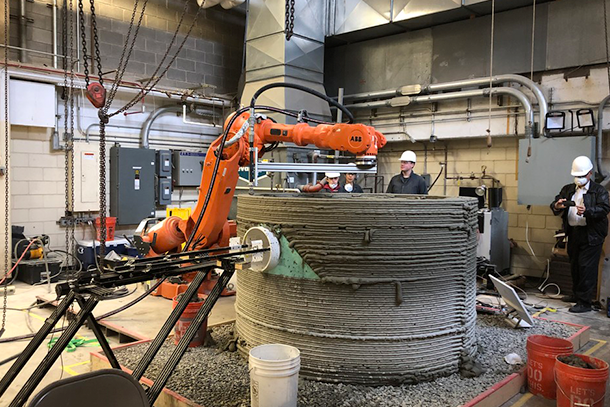Pennsylvania State University (PSU) has received a grant worth $180,000 from science-based technology company 3M to explore quality control methods for metal 3D printing.
Renewable for up to three years for a total of $540,000, the grant forms part of an agreement between the two parties to drive research into additive manufacturing and other activities.
“3M is funding the grant but, more importantly, the company will be a close collaborator on this project,” said Allison Beese, principal investigator and associate professor of materials science and engineering in the College of Earth and Mineral Sciences. “The Penn State researchers will ensure scientific rigor, while 3M – a leader in industrial additive manufacturing – will guide industry relevancy, continuing to build the strong partnership between 3M and Penn State.”

Penn State and 3D printing
PSU has conducted a variety of additive manufacturing research projects over the last few years, in addition to launching its own graduate course to help engineers tackle legal issues arising in the 3D printing sector.
In 2018, PSU researchers created a novel 3D printing method to create tissue building blocks with micropores, involving the 3D printed stem cells derived from human fat mixed with sodium alginate porogens found in seaweed. Shortly after, another Penn State research team figured out a way to maximize the amount of light emitted by LED lightbulbs using high-precision nanoscale 3D printing.
Most recently, PSU received $75,000 to develop its 3D printing concrete system following its participation in NASA’s 3D Printed Mars Habitat Challenge. The multidisciplinary team aimed to use the sum to design high-performance, sustainable concrete with a new cement-based mixture for use in their six-axis robotic additive manufacturing machine.

Assessing quality control of 3D printed parts
The PSU team will use a nondestructive evaluation (NDE) method, where a part or system is tested without being harmed, to assess 3D printed parts. In particular, the team will focus on investigating quality control methods for binder jetting, an additive manufacturing process that combines repeated layers of powder particles and an adhesive.
Currently, evaluation processes involve testing a sample part’s properties to determine whether a whole batch is adequate and safe for use. If a part passes or fails these tests, it is rarely evaluated further and the cause largely remains unidentified.
“We’re trying to develop a detailed scientific understanding of how to link the binder jet process to the microstructure and the quality of the part,” Beese added. “At the end of the day, someone should be able to use NDE to evaluate a part to determine if the part is suitable for use and know exactly what in its microstructure results in good or bad properties.”
The researchers will therefore explore the connections between the processes used, the microstructure of the parts, and their mechanical properties, to understand more clearly the reasons for failure, and how manufacturing methods could be improved as a result.

Ultrasonic NDE
Throughout their investigation, the PSU team will use ultrasonic NDE, which involves sending ultrasonic waves into a material and observing their movement. Through this, the researchers will be able to identify microscopic features and flaws in the structure of the part which influence its mechanical performance.
Using ultrasonic NDE will help the team to predict performance failures or successes before they happen, and allow them to draw conclusions from the results. Understanding the links between process, structure, property, and performance (PSPP) will also provide insight into how parts could be redesigned and optimized through changes to the material and manufacturing process.
“We aim to develop models that link ultrasonic measurements to microstructure and collaborate with Dr. Beese to connect the microstructure analysis to mechanical properties,” said Andrea Arguelles, co-principal investigator and assistant professor of engineering science and mechanics at PSU. “Our ultimate goal is to develop an ultrasonic method and model that will provide manufacturers with a prediction for a part’s performance.”
Working alongside Arguelles and Beese will be co-principal and assistant professor of engineering science and mechanics, Christopher Kube, who believes the use of ultrasound NDE throughout the project will provide novel results.
“Ultrasound is a traditional tool to assess the quality of structural components that have already been fabricated,” he said. “This project, however, is unique in that ultrasound is being used parallel to the material development process to accelerate toward high-quality structural components.”
Subscribe to the 3D Printing Industry newsletter for the latest news in additive manufacturing. You can also stay connected by following us on Twitter and liking us on Facebook.
Be sure to subscribe to the Another Dimension podcast on your chosen podcast player to make sure you never miss an episode.
Looking for a career in additive manufacturing? Visit 3D Printing Jobs for a selection of roles in the industry.
Featured image shows PSU researchers demonstrate the technology used to analyze wave propagation data. Image via Andrea Arguelles/Penn State.


